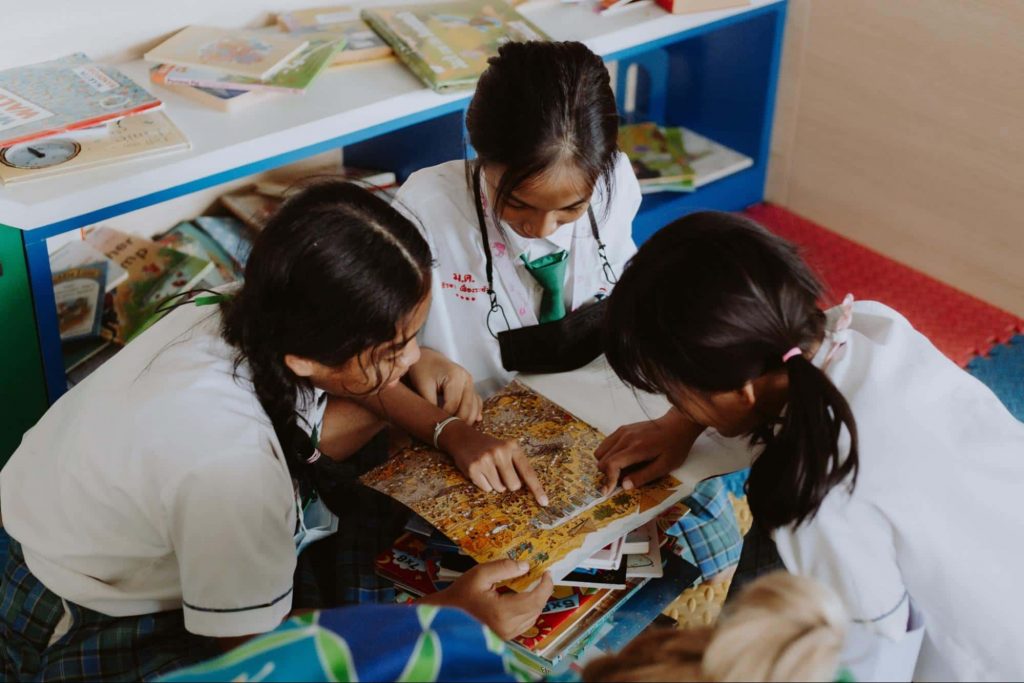No two days are the same and what might have worked once in a classroom, might not work again. Switching between teaching strategies to suit the needs of the learners is a great way to ensure that the learners are meaningfully engaged and actively participating in the classroom.
Whether you have just begun as a teacher or you have years of classroom experience, you know that creative teaching strategies help students meet their individual needs and hit their full potential.
Every teacher’s classroom practice is unique, so here are 7 effective teaching strategies you can use for inspiration to give your students a fulfilling learning experience.
1. Visualization
Visualization is very simply put, the ability to create mental images based on the words we hear or the text that we read.
This strategy, if used well, can drastically help students focus on the concept or subject matter at hand. It brings concepts to life and encourages students to make connections to the real world.
Some of the methods of implementing this strategy in the classroom include:
Use of audio visual aids like photos, videos, audio clips, songs etc
Diagrams, charts and mind maps
Modeling as you teach for the visual learners who might need to see a visual representation to understand as opposed to hearing the concept being explained.
An image of a concept being studied visually on a tablet
2. Cooperative Learning
Virtual learning has led educators to understand the importance of a key part of the learning process – cooperation.
Cooperative learning is an instructional strategy in which a small group of students collaboratively work on a given task. The task can be as simple as solving a quiz or as complex as writing a story.
SplashLearn: Most Comprehensive Learning App for PreK-5
Product logo
SplashLearn inspires lifelong curiosity with its game-based PreK-5 learning program loved by over 40 million children. With over 4,000 fun games and activities, it’s the perfect balance of learning and play for your little one.
Try for free
In such activities, students of different learning abilities come together and help maximize each other’s potential. It nurtures shouldering the responsibility to contribute to successfully finishing the task. It also encourages students to support one another and pitch in wherever required to achieve the end goal.
An image of kids in class cooperating while studying cooperation is a teaching strategy
3. Differentiated Instruction
Every classroom is a dynamic learning space with learners of varied abilities and personalities.
Differentiated instruction is a teaching strategy that takes into account that students from a single classroom may be at different starting points in their learning process.
Differentiated instruction needn’t just mean different content to suit individual needs. It can mean a combination of different content, products, teaching aids, methods, or even a different learning environment to help learners succeed.
For example, in an ELA lesson, a teacher might choose to divide the students into two groups based on their decoding and comprehension capacities.
Related Reading: Ways to Implement Restorative Practices in the Classroom
Each group might receive a text that is suited to the group’s ability to grapple with it. While one group may read and discuss their text independently, the teacher might choose to work with the second group to help them read. The two groups may also receive differentiated assessment tools such as worksheets of varying complexity.
This helps address diversity in learning experiences and cater to all the students in an equally engaging way.
4. Using Technology to your Advantage
Technology in the classroom is a great way to keep students actively engaged, especially since education has changed drastically in the recent past with the rise of remote learning.
Introducing online interactive games encourages student participation, which in turn ensures a fulfilling learning experience. Educational games serve as a platform for children to learn through play.
You can find many educational games for math and ELA to help your students understand and apply the concepts they learn in a fun and enjoyable manner.
An image showing learning on tablet
5. Student Centred Inquiry
Student-centered inquiry is a method that focuses on the student’s role in the learning process. So, in an inquiry-based classroom, one would see students exploring the material or concept, making sense of it, sharing thoughts and ideas, and asking questions rather than the teacher just orally explaining the concept.
This strategy is a great way to generate curiosity among young learners and engage an inactive class. Through such an approach, children develop skills of researching, co-relating, and reflecting on information through independent exploration and engagement with the content.
Related Reading: Compound Words That Your Students Can Start Learning Today
An image of a kid reading
6. Professional Development
Teaching is a dynamic and demanding profession. Investing some time to take up professional development courses is a great way to keep up with new research and methods relevant to the classroom.
With educational practices and policies constantly getting upgraded, such courses are perfect to interact with like-minded teachers to share inputs and ideas (your own version of cooperative learning!) that can be used in your teaching practice!
Every teacher is unique and so is their classroom. So, what might work for your classroom may be entirely different than what may work for your colleagues. By using a combination of teaching strategies and changing the mix every once in a while, your classroom is sure to become an enriching environment for you and your students.
What teaching strategies are your preferred choice to include in your practice? Do you have any tips for other teachers? We would love to hear from you, so write to us at help@splashlearn.com

